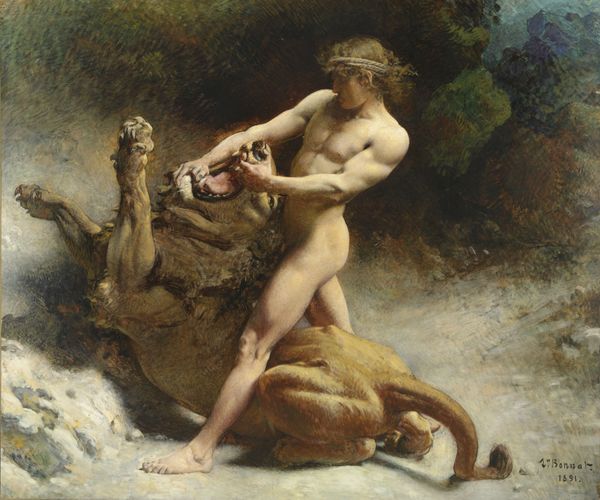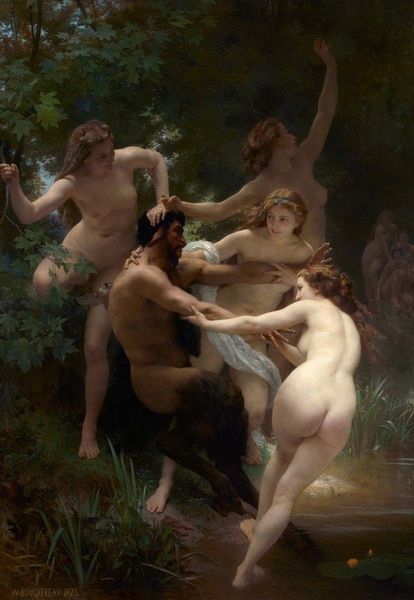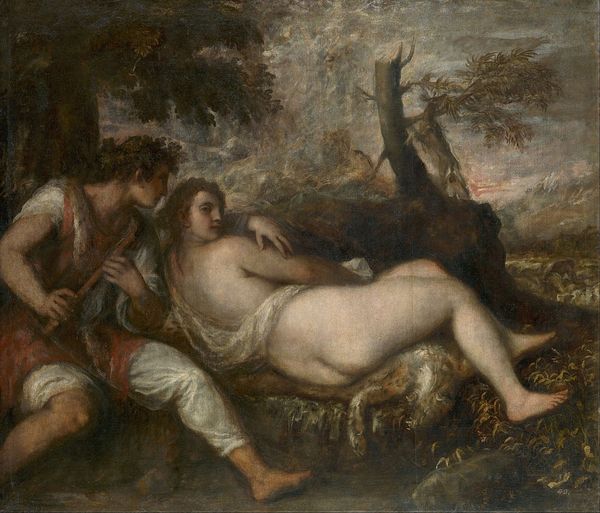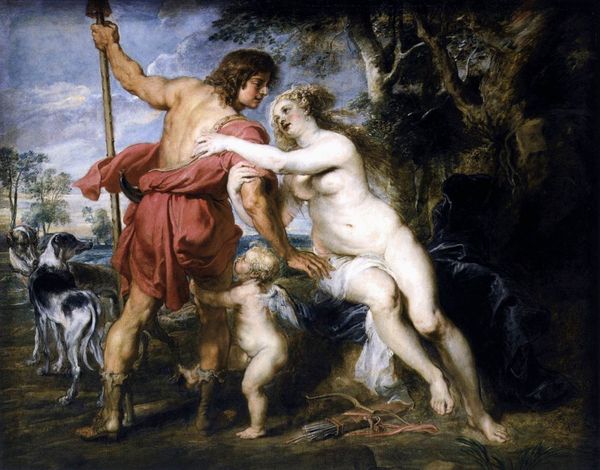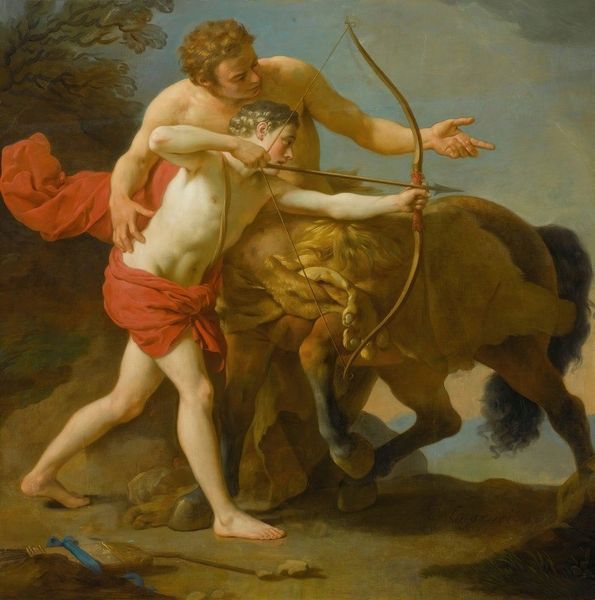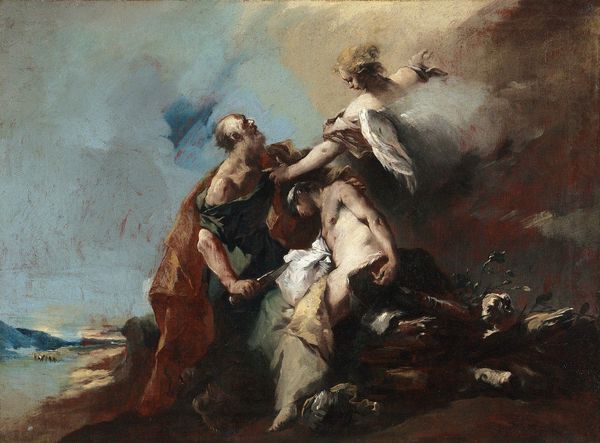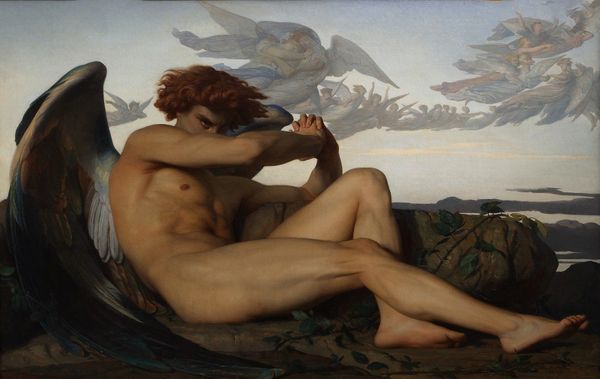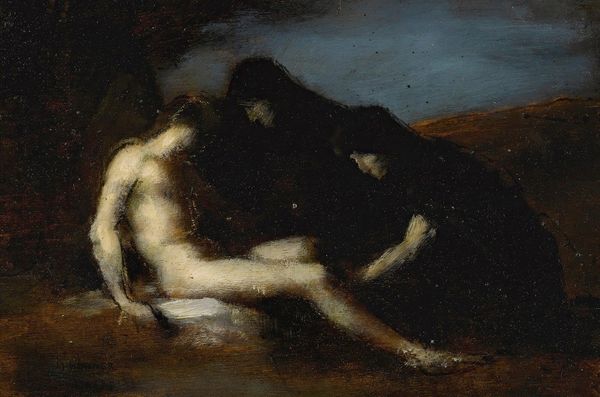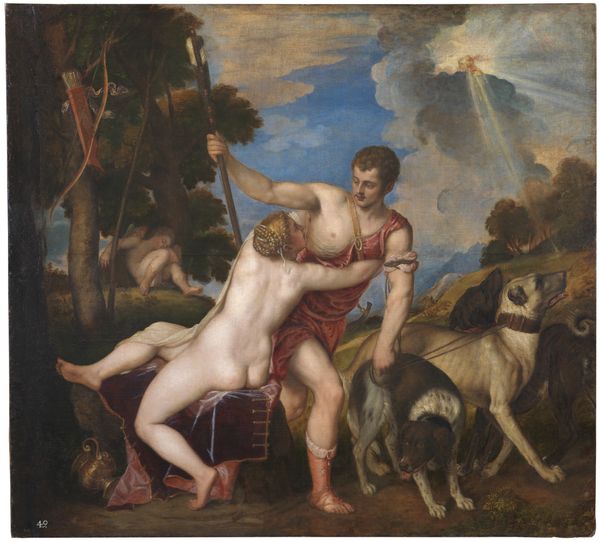
Copyright: Public Domain: Artvee
Editor: This is William Bouguereau's *The First Mourning*, painted in 1888. It's incredibly bleak. Three figures, obviously distraught over a body. The palette is somber, and it feels very staged. What does this scene say about grief, especially considering its historical context? Curator: Well, looking at *The First Mourning* through a historical lens, it's crucial to consider Bouguereau’s place within the French Academy. He was incredibly popular but also criticized for clinging to idealized forms and narratives, even as modernism began to take hold. Does this look like raw grief to you or a very polished presentation of grief? Editor: That's a good point. There's a certain theatricality to the poses, like they’re acting out a part. It feels removed from genuine, personal anguish. Do you think Bouguereau intended to evoke specific historical or mythological references? Curator: Precisely. Many argue that it portrays Adam and Eve mourning Abel. Framing this scene, this biblical "first mourning", Bouguereau taps into universal themes of loss and guilt. However, he does so through the lens of academic tradition, creating a painting designed to elicit a controlled emotional response from the Salon audience. How might its original display within the Salon context influence our reading of its sentimentality? Editor: I see. So, its success wasn't just about depicting sadness, but also about conforming to and reinforcing certain established social and artistic norms? The display itself influenced the impact of the painting? Curator: Exactly! It speaks volumes about the politics of imagery and the power of institutions like the Salon in shaping public taste and defining what constituted 'appropriate' emotional expression in art. Think of this in opposition to more modern art movements emerging at the time focused on emotion! Editor: It’s interesting how an artwork can be both deeply moving and a product of its socio-political climate. I'll definitely look at other academic paintings with a more critical eye toward context. Curator: It all comes down to how art reflects and is influenced by the culture it lives in, especially regarding emotional expressions. Art exists in conversation with itself!
Comments
No comments
Be the first to comment and join the conversation on the ultimate creative platform.
